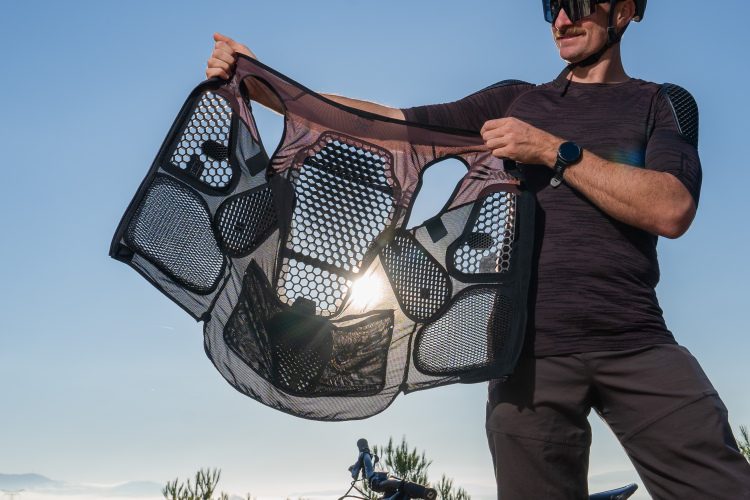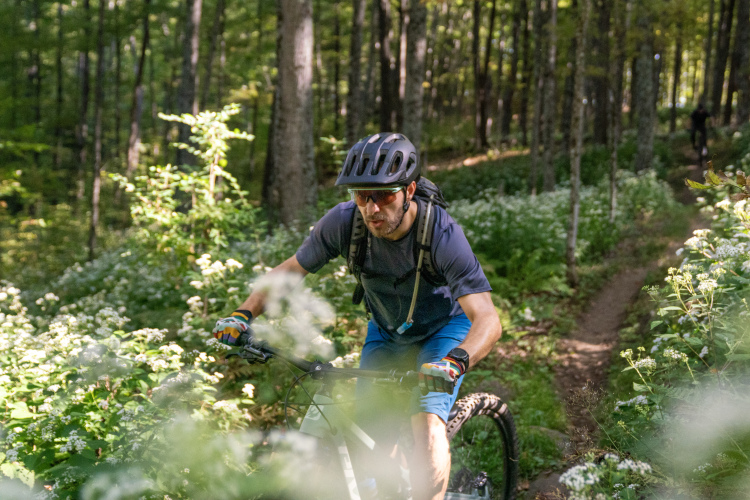Well, I did it. I finally got my first GPS with a color screen. This is GPS #8 for me and I thought I’d share some of my impressions for those of you considering the Garmin GPSMap 60Cx for mountain biking. My last GPS review was of the Garmin Edge 305 where I proclaimed that the 305 was THE BEST GPS for mountain biking ever. In that light, this review will compare the GPSMap 60Cx with the Edge 305 to see how it stacks up on the trail.
The first difference you’ll notice between the GPSMap 60Cx and the Edge is size; the GPSMap is roughly 2 times larger than the Edge. Presumably this is because the GPSMap is packed with more features and a more powerful antenna (which, I might add, protrudes in a very obvious way). The bike mount for the GPSMap is bulky and in my experience it tends to allow the GPS to rattle on bumpy trails. The Edge? Quiet as a mouse.

Another obvious difference between these GPS devices is the color screen. As I mentioned earlier, this is my first GPS with a color screen and I gotta say, it will be hard to go back to black and white. The color screen makes following tracks and finding waypoints much, much easier and gives the contrast you need to see things like topo lines and roads. Speaking of topo lines, the GPS 60Cx has them (with additional software) while the Edge 305 doesn’t. For navigation the GPSMap wins hands down.
In terms of accuracy, I had heard that the GPSMap 60Cx was less accurate on the trail than the Edge 305 but I only noticed this in terms of the elevation data collected. As you can see from the map below created in TopoFusion (Edge track in blue, GPSMap in red) there is little difference in 2D plotting but in 3D, the GPSMap was horribly inaccurate. This is mostly due to the fact that the GPSMap 60Cx doesn’t include a barometric altimeter which the 60CSx adds for an additional $50 or so. Not only is the GPSMap 60Cx inaccurate when recording elevation, it doesn’t even show you an elevation plot on screen (that I could find anyway). Nope, you’ll need to download data to your computer to view this–unacceptable in my opinion.



Lastly, I’ll mention some issues with using the TracBack feature on the GPSMap 60Cx. First off, Garmin limits tracks to just 500 points so if you’re transferring a MTB track you downloaded from singletracks that has more than 500 points, you’ll need to trim it down to fit the entire ride on your GPS. Luckily MapSource software has a feature to help you do this but it’s not intuitive and it leads to the loss of some trail detail. On the plus side, the color screen gives you the ability to choose a color for your track lines (I like red myself) so it’s easy to distinguish from your own track log and various roads, topo lines, etc. It even gives you some turn-by-turn cues as well, very cool when navigating an unfamiliar trail.
So while the color screen and ability to import maps to the GPSMap 60Cx is great, I think I’ll stick with my Edge 305 when I’m on the MTB trail. Look for the forthcoming Edge 705 to combine the superior usability of the 305 with a color screen and mapping capabilities, it could very well be the perfect GPS for mountain biking!











1 Comments
Apr 24, 2009
60 cx is excellent gps for mtb or dirtbiking.
Saved tracks are created either automatically once the active track becomes too large or manually by the user from the keypad. Saved tracks are 'compressed' by the unit to have under 500 trackpoints and have neither elevation nor timestamps and have fewer stored trackpoints.
Optionally, the unit may write tracks to the removable SD memory card as GPX files. These files are immune from the compression of saved tracks so they always have timestamps and alttudes.
You can